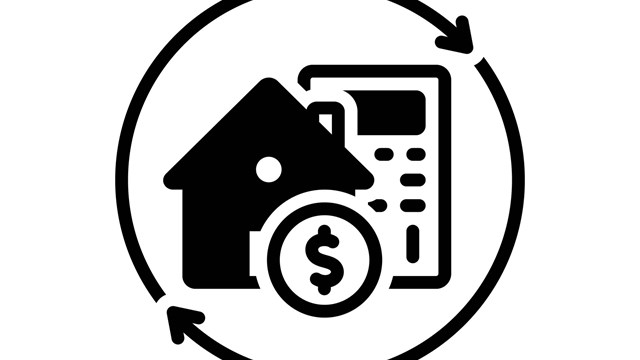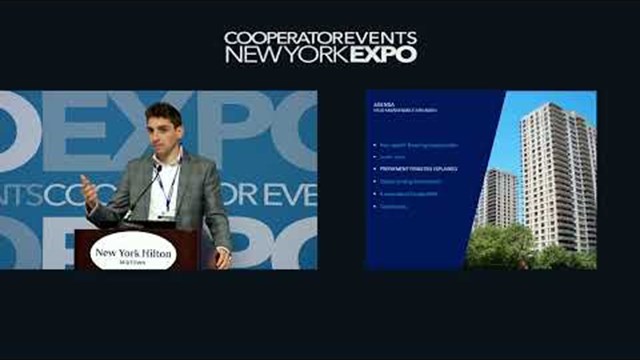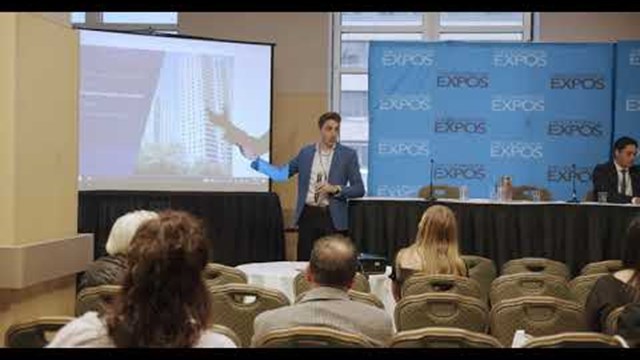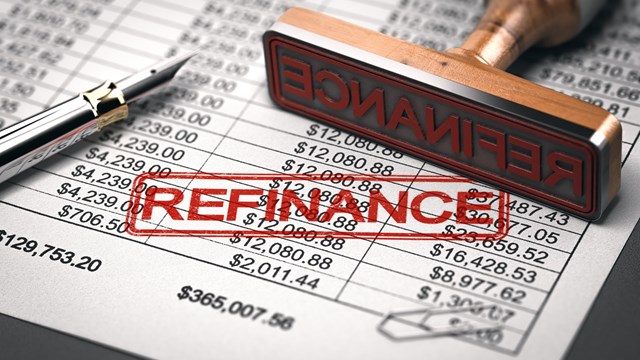One of the components that makes co-op ownership unique is its financing structure. Unlike a condominium, the property is owned as a whole, fee-simple estate – and so the entire property can be encumbered by a permanent, long-term loan. This financing vehicle is known as an underlying permanent mortgage.
A Bit of History
The genesis of the underlying permanent mortgage lies in the history of the co-op form of ownership. Co-ops have been around for a long time. In fact, the first in New York City was built in 1881, located at 152 West 57th Street. At that time (and well into the second half of the twentieth century) co-ops were primarily for the very rich. The more middle-class co-op boom didn’t really happen until the mid-1970s and lasted into the early 1990s, when the city saw its first real bust in the co-op market.
Why the proliferation of co-ops in the 1970s? New York City was in dire economic crisis at the time, and many landlords, faced with tightly-controlled rents and steeply rising expenses, chose to sell their buildings to their tenants at reduced prices to get free of properties that had become liabilities. Virtually all of these properties were encumbered with existing commercial mortgage financing. Conversion to cooperative ownership, rather than condominiums, provided the pathway to transfer that existing debt to the co-op rather than pay it off, which often involved substantial prepayment penalties and higher offering prices. Thus, the underlying permanent mortgage became a fact of life for co-ops.
Today’s Market
If your co-op’s underlying mortgage is coming due in the near future, there’s a healthy market in which to refinance it. “Most underlying permanent mortgage financing today is done by local savings banks – and in the case of larger mortgages by insurance companies,” says Robert Delitsky, Senior Vice President and Managing Director with NorthMarq Capital in New York City.
According to Harley Seligman, Vice President of National Cooperative Bank (NCB) in New York City, “Loans are available for five to as much as 30 years, with amortization up to 30 years. Rates are based on a spread over corresponding Treasury Bills of between 140-170 basis points.” That places rates at 3.5 to 4 percent today. “Most loans are for 10 years,” Seligman continues. “In the tri-state area, the main providers of underlying permanent mortgages are the savings banks. For the $10 million to $50 million ‘Park Avenue’-type loans, some insurance companies are active, but mainly it’s the savings banks.”
Other Terms
As mentioned above, most underlying permanent mortgages are for 10 years, and carry amortization based on a 25- to 30-year payment—typical commercial mortgage terms. They will generally carry a prepayment based upon a declining penalty beginning at 5 percent of the outstanding loan balance in the first year, declining by 1 percent every two years to a minimum of 1 percent in the last two years of the loan. Often there is an open prepayment for the last 30 to 90 days of the loan. Most loans from savings banks will require an origination fee of approximately ¼ to ½ of a percent of the loan amount, while loans from insurance companies are generally ‘at par,’ meaning there is no origination fee.
Other conditions that apply to the loan include the completion of an appraisal, an engineer’s report, and an environmental study. There are also the commensurate legal fees to close the transaction and in most cases a broker’s fee. Lenders may also require reserves to be deposited if the engineering study indicates work is needed at the building and may require some or all of the building reserve funds to be deposited as well.
Things to Consider
Perhaps the most important considerations for a co-op underlying permanent mortgage as opposed to a mortgage on a rental building is flexibility of prepayment and the availability of someone to talk to in the event of any issue the co-op might have during the life of the loan. While Wall Street-based securitized lenders may be slightly more competitive on pricing, they are not necessarily the best choice for a co-op for exactly those reasons.
“I would direct the deal to a savings bank,” says Delitsky. “A local bank understands the market and the product better than a securitized lender, primarily because of who will service the loan. Servicing the loan is critical. Co-op boards will always have issues. They may need money, or a larger line of credit, and once the loan is sold, as it is in a securitization on Wall Street, you can’t do anything with it. The lender for an underlying permanent mortgage should be a portfolio lender. It’s critical that the loan stays ‘on-the-books,’ so there is someone to talk to if need be.”
Pitfalls
There are a number of potential problems and pitfalls that can befall a co-op seeking to refinance their underlying permanent mortgage – many that might not be evident at first glance. The most important of these deals directly with owner occupants, or to be more specific, the percentage of owner occupants in the building.
For many years after the initial co-op conversion boom – especially after the co-op market decline in the early 1990s – many co-op buildings had low ratios of owner-occupants to renters. Substantial numbers of co-ops had more units held by the original landlord (or ‘sponsor,’ as owner/developers are usually called) and occupied by renters than than they had fully-vested shareholders. This situation caused problems, both conceptually and practically. Most renters don’t take the same pride of ownership in a building that owners do, and as a result, tensions can build between vested shareholders and the more transient renter population in a co-op building. Over the past two decades the number of co-ops with this problem has declined, but some do still exist – and their off-balance renter-to-owner ratio makes them tough to refinance.
Barry Korn, Managing Director of Barrett Capital Corporation, a mortgage banking company located in New York City, says, “We do still see low-sold co-ops. We recently completed a deal where the sponsor still holds 30 percent of the units. It limited the choice of banks who would consider the deal. Ultimately I was able to get the financing done at an attractive rate, though not necessarily at the best terms available in the market. They were the best terms available for this property. In this case, we needed to put some additional monies into the reserves.”
Seligman agrees that there are some low-sold co-ops left, and says, “We do them here at NCB, though we prefer situations where the sponsor was never really looking to sell off all the units, and is in fact operating his units efficiently as a rental. On a co-op building with sublets, however, we will only lend if no more than 50 percent of the units are sublet. Generally, individually-owned sublet units are not looked after well, whereas a sponsor with a large stake will look after the building well. That’s not as true of individual sublets.”
For his part, Delitsky says of sublets, “The less the better. The lender will ask for a list of sublet units, and if there are too many, they will back off from the loan. They want owner occupants.”
Appraisals
Like all mortgages, an appraisal will be required to close the refinancing of an underlying permanent mortgage. Appraisals of co-op properties are done from a slightly different perspective than other appraisals. While the lender and the appraiser view value in terms of the aggregate value of the apartments on the open market, they will also view the value of the property from a theoretical position of its value as a rental. The theoretical rental value of the building is considered more heavily by the lender, and the loan-to-value ratio will depend on this analysis. “Valuation,” confirms Seligman, “is still viewed from two directions: as a co-op, and as a rental.”
Secondary Financing
Another major consideration for co-op boards when refinancing their underlying permanent mortgage is whether or not their mortgagee will permit secondary financing – which usually means lines-of-credit for additional future work at the building. Delitsky says many lenders will consent to lines of credit if the co-op needs to do work in the building. “It’s not going to be a big line of credit, and it’s never going to be above a 50 percent loan-to-value total financing ratio,” he says. “The funds will also be restricted for use in the property.”
Korn adds that his firm offers unsecured financing for co-ops for capital improvements and maintenance projects. “When they have a mortgage with a huge prepayment penalty and an attractive rate, it doesn’t pay to refinance – so we offer second and unsecured mortgages, particularly for energy efficiency projects.”
Will It Ever Be Paid Off?
The short answer is...probably not. According to Seligman, “We constantly get calls asking for loans where the co-op can prepay large chunks of the mortgage during the life of the loan, but historically, we’ve seen that this never happens. Boards think that if they have a windfall – say a large number of flip tax payments, or a large increase in income from a retail lease – that they will prepay some or all of the mortgage, but no one ever does. We no longer accommodate that request. What happens is that usually co-ops need additional funds to do work. They never completely pay off the underlying permanent mortgage. The only time self-liquidating loans make sense is on very small co-ops of say, four to eight units.”
It appears then that the underlying permanent mortgage is a fact of co-op life that’s here to stay – so understanding the history and a few basic concepts can help your board and shareholders manage your own prudently.
A.J. Sidransky is a staff writer with The Cooperator, and a published novelist.










Leave a Comment